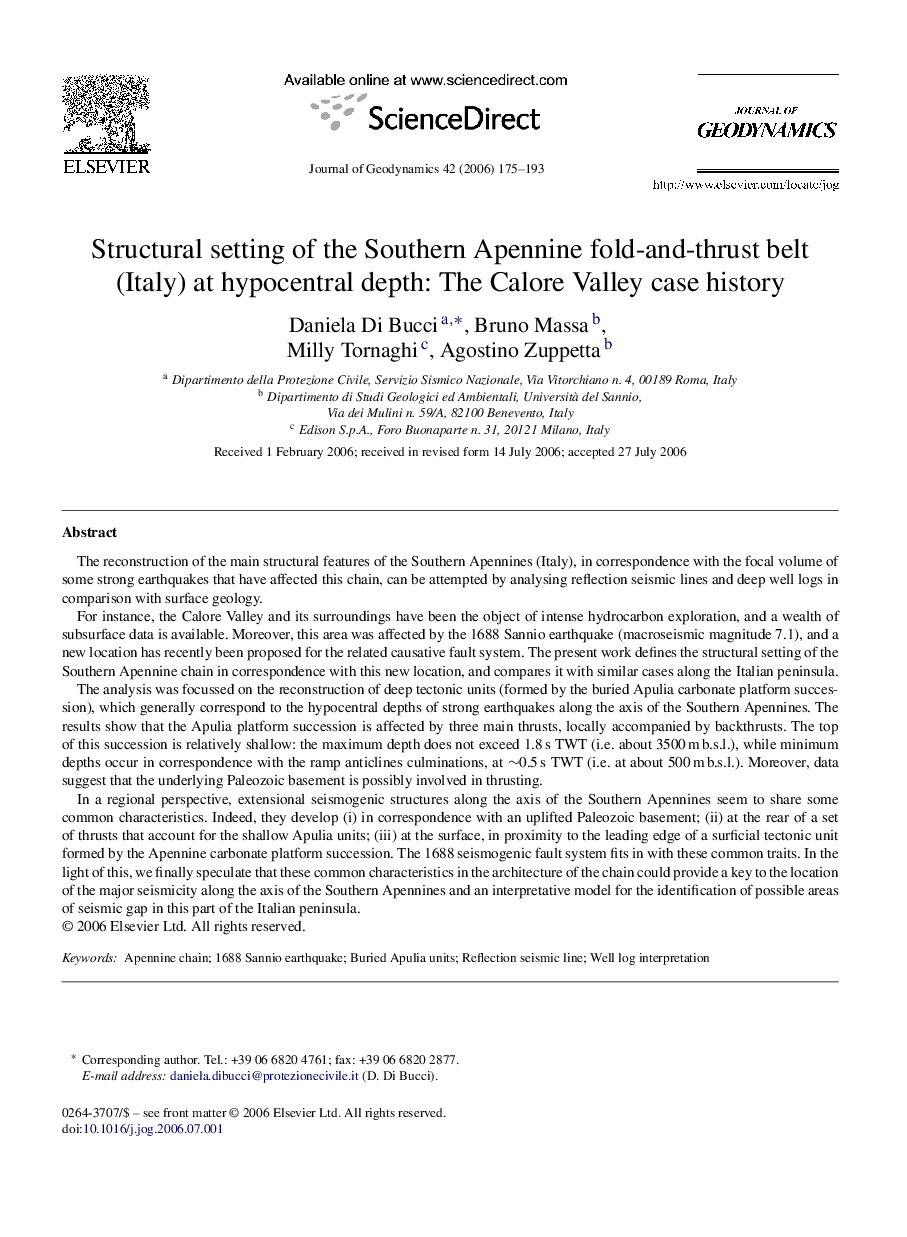| کد مقاله | کد نشریه | سال انتشار | مقاله انگلیسی | نسخه تمام متن |
|---|---|---|---|---|
| 4688810 | 1635809 | 2006 | 19 صفحه PDF | دانلود رایگان |

The reconstruction of the main structural features of the Southern Apennines (Italy), in correspondence with the focal volume of some strong earthquakes that have affected this chain, can be attempted by analysing reflection seismic lines and deep well logs in comparison with surface geology.For instance, the Calore Valley and its surroundings have been the object of intense hydrocarbon exploration, and a wealth of subsurface data is available. Moreover, this area was affected by the 1688 Sannio earthquake (macroseismic magnitude 7.1), and a new location has recently been proposed for the related causative fault system. The present work defines the structural setting of the Southern Apennine chain in correspondence with this new location, and compares it with similar cases along the Italian peninsula.The analysis was focussed on the reconstruction of deep tectonic units (formed by the buried Apulia carbonate platform succession), which generally correspond to the hypocentral depths of strong earthquakes along the axis of the Southern Apennines. The results show that the Apulia platform succession is affected by three main thrusts, locally accompanied by backthrusts. The top of this succession is relatively shallow: the maximum depth does not exceed 1.8 s TWT (i.e. about 3500 m b.s.l.), while minimum depths occur in correspondence with the ramp anticlines culminations, at ∼0.5 s TWT (i.e. at about 500 m b.s.l.). Moreover, data suggest that the underlying Paleozoic basement is possibly involved in thrusting.In a regional perspective, extensional seismogenic structures along the axis of the Southern Apennines seem to share some common characteristics. Indeed, they develop (i) in correspondence with an uplifted Paleozoic basement; (ii) at the rear of a set of thrusts that account for the shallow Apulia units; (iii) at the surface, in proximity to the leading edge of a surficial tectonic unit formed by the Apennine carbonate platform succession. The 1688 seismogenic fault system fits in with these common traits. In the light of this, we finally speculate that these common characteristics in the architecture of the chain could provide a key to the location of the major seismicity along the axis of the Southern Apennines and an interpretative model for the identification of possible areas of seismic gap in this part of the Italian peninsula.
Journal: Journal of Geodynamics - Volume 42, Issues 4–5, November–December 2006, Pages 175–193